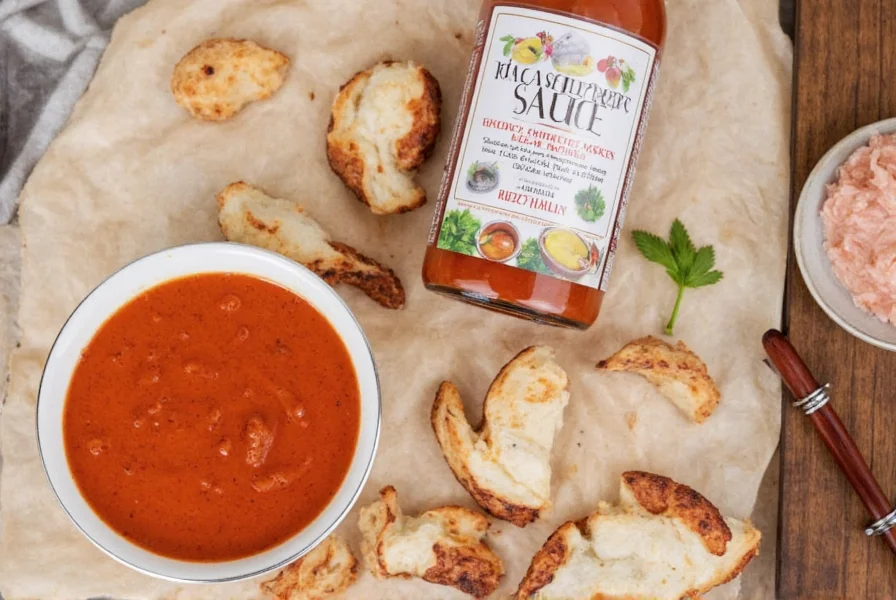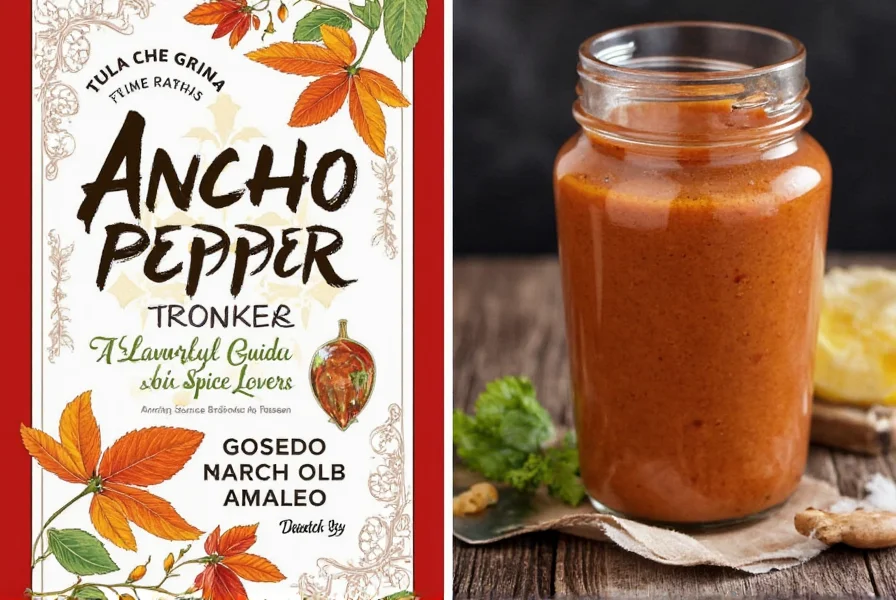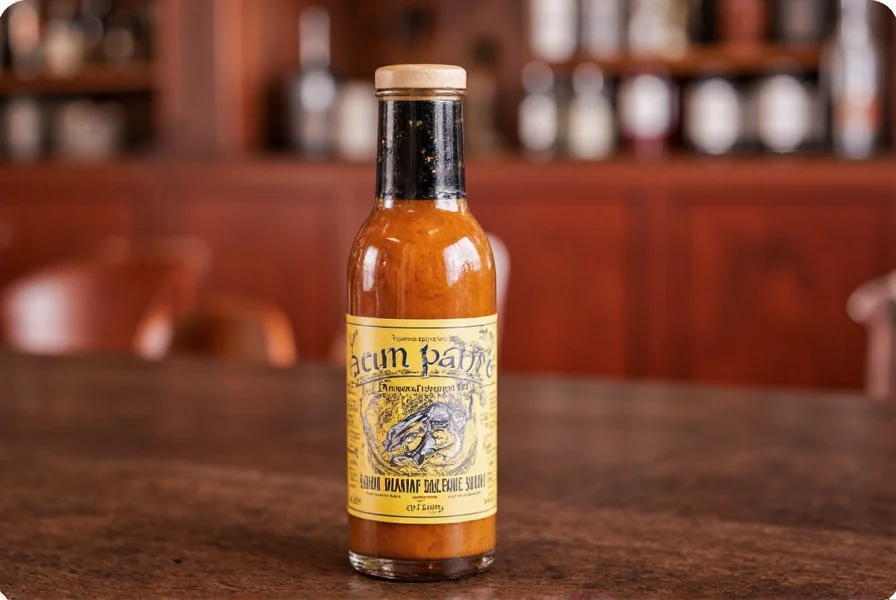Table of Contents
Introduction to Ancho Pepper Sauce
Ancho pepper sauce is a traditional Mexican condiment made from dried poblano peppers ("ancho" means "wide" in Spanish). According to culinary experts, this sauce has a rich, smoky, and slightly sweet flavor profile with mild to medium heat, making it a versatile addition to many dishes. Originating from Mexico's Puebla region, ancho peppers are among the most commonly used chilies in authentic Mexican recipes.

Understanding the Flavor Profile
The ancho pepper is known for its deep, earthy, and slightly sweet flavor with a mild to medium heat level (1,000-2,000 Scoville units). When made into a sauce, it develops a smooth, velvety texture that enhances the overall taste of food. The flavor profile is characterized by smoky notes from the drying process, natural sweetness from the pepper's sugar content, and subtle tanginess from natural acids.

How Does It Compare to Other Chili Sauces?
| Sauce Type | Heat Level | Flavor Notes | Best For |
|---|---|---|---|
| Ancho Pepper Sauce | Mild to Medium | Smoky, Sweet, Tangy | Meats, Stews, Tacos |
| Habanero Sauce | Hot | Spicy, Citrusy | Grilled Foods, Salsas |
| Mole Sauce | Medium to Hot | Rich, Complex, Spiced | Chicken, Pork, Dishes with Depth |

Essential Cooking Tips
If you're new to cooking with ancho pepper sauce, here are practical tips to maximize its flavor:
- Soak the peppers first: Before blending, soak dried ancho peppers in warm water for 30 minutes to soften them and release full flavor. This step is critical for achieving smooth texture.
- Blend for a smooth texture: Use a high-speed blender with a small amount of liquid (water or broth) to achieve creamy consistency. For chunkier sauce, pulse briefly or add fresh herbs like cilantro.
- Add acidity: Balance richness with 1-2 tsp lime juice or apple cider vinegar per cup of sauce. This enhances flavor complexity and preserves freshness.
- Experiment with spices: Add 1/2 tsp cumin, smoked paprika, or garlic powder to customize. For authentic Mexican flavor, include a pinch of Mexican oregano.
- Storage: Refrigerate homemade sauce for up to 2 weeks. Freeze in ice cube trays for long-term storage and easy portioning.

The Ultimate Buying Guide
When purchasing ancho pepper sauce, consider these expert recommendations:
Key Buying Criteria
- Ingredients: Look for simple ingredient lists with peppers, vinegar, salt, and natural spices. Avoid added sugars, preservatives, or artificial flavors.
- Origin: Authentic Mexican-made sauces typically have better flavor profiles. Check for "Made in Mexico" labeling.
- Heat level: Ancho should be mild to medium (1,000-2,000 Scoville units). Higher heat indicates possible adulteration with hotter peppers.
- Reviews: Check trusted food review sites like Serious Eats or Food Network for verified user feedback.

Creative Uses for Ancho Pepper Sauce
Expand beyond traditional Mexican dishes with these innovative applications:
- Marinade for proteins: Mix 2 tbsp sauce with 1 tbsp olive oil, 1 minced garlic clove, and 1 tsp cumin. Marinate chicken, pork, or tofu for 30+ minutes before grilling or roasting.
- Vegetable glaze: Brush over roasted carrots, sweet potatoes, or Brussels sprouts during the last 5 minutes of cooking for caramelized flavor.
- Breakfast enhancement: Add 1 tsp to scrambled eggs or avocado toast for a smoky kick.
- Stir-fry base: Combine with soy sauce and ginger for an Asian-inspired stir-fry sauce.
- Cocktail modifier: Add 1/2 tsp to margaritas or Bloody Marys for a complex spicy note (use sparingly).

Conclusion
Ancho pepper sauce is more than just a condiment—it's a flavor powerhouse that elevates cooking through its unique smoky-sweet profile. By understanding its origins, proper usage, and quality indicators, you can confidently incorporate this authentic Mexican ingredient into diverse dishes. Always prioritize products with transparent sourcing and simple ingredients for the best culinary experience.












 浙公网安备
33010002000092号
浙公网安备
33010002000092号 浙B2-20120091-4
浙B2-20120091-4